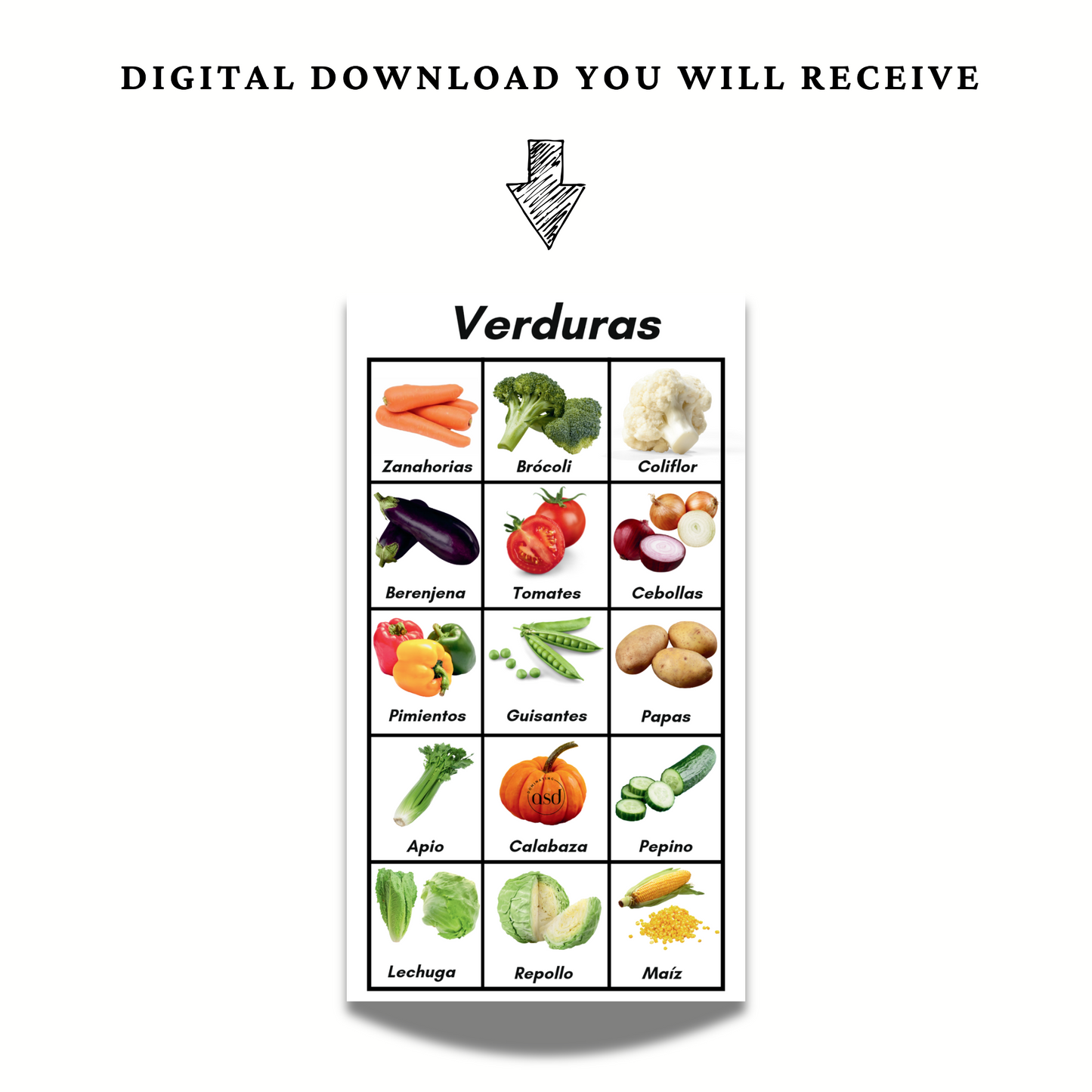My Store
Vegetables Chart (Spanish)
Vegetables Chart (Spanish)
Couldn't load pickup availability
A visual vegetable chart can offer a range of benefits for kids, enhancing their learning and engagement with healthy eating habits. Here are some key advantages:
1. Nutritional Education: A vegetable chart helps children learn about different types of vegetables, their colors, shapes, and nutritional benefits, fostering an understanding of healthy eating.
2. Visual Appeal: Bright and colorful images can capture children's attention, making the learning process fun and engaging.
3. Encouragement of Healthy Choices: By showcasing a variety of vegetables, a chart can inspire kids to explore new foods and incorporate more vegetables into their diets.
4. Vocabulary Development: Introducing children to the names of various vegetables helps expand their vocabulary and language skills.
5. Cooking Inspiration: A visual chart can spark interest in cooking and preparing meals, encouraging children to participate in kitchen activities and try new recipes.
6. Cognitive Skills: Identifying and categorizing vegetables can enhance critical thinking and observational skills as children learn to recognize different types.
7. Interactive Learning: The chart can be used for games, sorting activities, or discussions, making learning interactive and enjoyable.
8. Fostering Curiosity: Kids may become curious about where vegetables come from, leading to discussions about gardening, farming, and sustainability.
9. Social Interaction: A vegetable chart can facilitate conversations about food choices between children, caregivers, and peers, promoting social skills and collaboration.
10. Support for Different Learning Styles: Visual aids cater to various learning preferences, making it easier for children to engage with the material in a way that resonates with them.
In summary, a visual vegetable chart is a valuable educational tool that promotes healthy eating habits, supports learning, and encourages exploration of the food world among children.
Share




